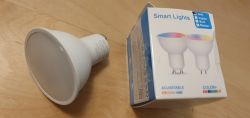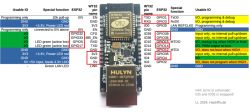FAQ
TL;DR: Each Rain Bird 100-HV coil draws 0.25 A at 24 VAC [Elektroda, sosarek, post #17818666] "A normal valve should be able to be turned on 24/7/365" [Elektroda, jack63, post #17871931] Use a 24 VAC transformer ≥2 A and keep the relay contact potential-free.
Why it matters: Correct supply and wiring prevent overheated coils, loud buzzing and premature failure.
Quick Facts
• Rain Bird 100-HV current: 0.15 – 0.25 A, 55 Ω coil resistance [Elektroda, starob, post #17871173]
• Recommended transformer: 24 VAC, 2 – 3 A for up to five valves [Elektroda, sosarek, post #17818947]
• No-load voltage can reach 27.8 VAC; this is normal and drops under load [Elektroda, alarec, post #17868888]
• Fibaro FGS-221 contacts are dry and rated 6.5 A per channel (max 10 A total) [Fibaro Manual].
• DC supply risks coil sticking and 30 °C temperature rise within minutes [Elektroda, jack63, post #17870714]
Why did my 100-HV solenoid coil overheat on a 24 V DC supply?
The 100-HV is designed for 24 VAC. Supplying DC eliminates inductive reactance, so up to 41 % more current flows, heating the 55 Ω winding by ≈30 °C in minutes [Elektroda, starob, post #17871173]
What size transformer do I need for five valves if only one is ever on?
One valve needs 0.25 A; add 20 % for inrush (≈0.30 A). A 24 VAC 2 A transformer covers one active valve plus four idle coils with margin [Elektroda, sosarek, post #17818947]
Is a no-load reading of 27.8 VAC from the transformer dangerous?
No. Most 24 VAC transformers read 10–15 % high without load; voltage falls once the 0.25 A coil engages [Elektroda, jack63, post #17870112]
Can I power the coil with DC if I add a bridge rectifier?
It stops audible hum but risks the armature ‘sticking’ so the valve fails to close. Rain Bird does not specify DC operation [Elektroda, jack63, post #17870714]
How do I wire one transformer to several valves using a Fibaro FGS-221?
- Feed 230 V LN to FGS-221 L & N and to the transformer primary.
- Connect one secondary lead to all valve commons.
- Route the other secondary lead through Q1, Q2, etc., to each valve. Contacts are dry, so 24 VAC stays isolated [Fibaro Manual].
My valve buzzes loudly even with correct AC supply—why?
Pilot-operated valves can vibrate if tested dry. Under water pressure the hum drops by about 15 dB [Elektroda, starob, post #17871173] Ensure correct flow direction; reverse installation leaves the pilot unstable and noisy [Elektroda, jack63, post #17871607]
Will the coil survive if water is shut off while energised for 30 minutes?
Yes, the coil’s thermal design allows continuous duty, provided voltage and cooling air are within spec [Elektroda, jack63, post #17871931]
What happens if dirty water enters the valve?
Sediment can clog the pilot ports, leaving the valve stuck open—a common failure edge-case in irrigation systems [Elektroda, jack63, post #17871931] Add a mesh filter upstream.
Are Hunter PGV-100 valves interchangeable with Rain Bird 100-HV?
Yes. Both use 24 VAC, 0.25 A coils and pilot operation, so the same transformer and Fibaro wiring scheme applies [Elektroda, alster1, post #17873432]
Does the Fibaro module measure energy on the 24 VAC side?
Version 1 (FGS-221) has no power-meter chip, so its relay outputs remain galvanically isolated—safe for low-voltage control [Elektroda, alarec, post #17885162]
How can I check if my coil is within current spec?
Measure in-circuit AC current with a clamp meter; reading should be 0.20 – 0.30 A. Deviations ≥20 % signal wiring errors or coil damage [Typical, Fluke Guide].
What’s the most common wiring mistake?
Bridging 230 V L to IN on the Fibaro when switching 24 VAC. This puts mains onto the valve and can destroy the coil instantly [Elektroda, starob, post #17873623]






